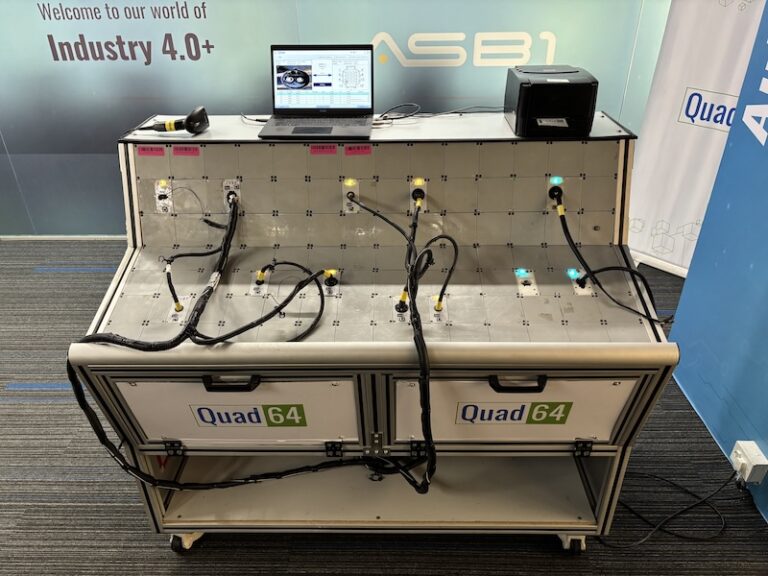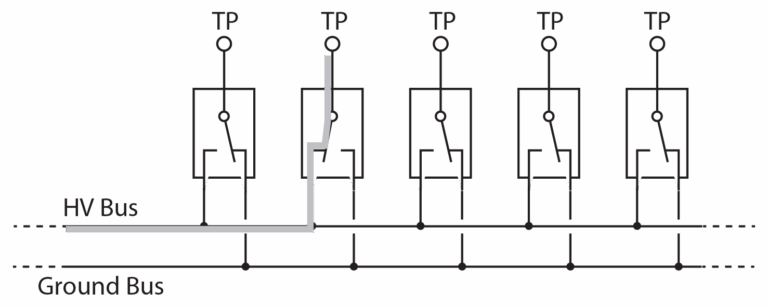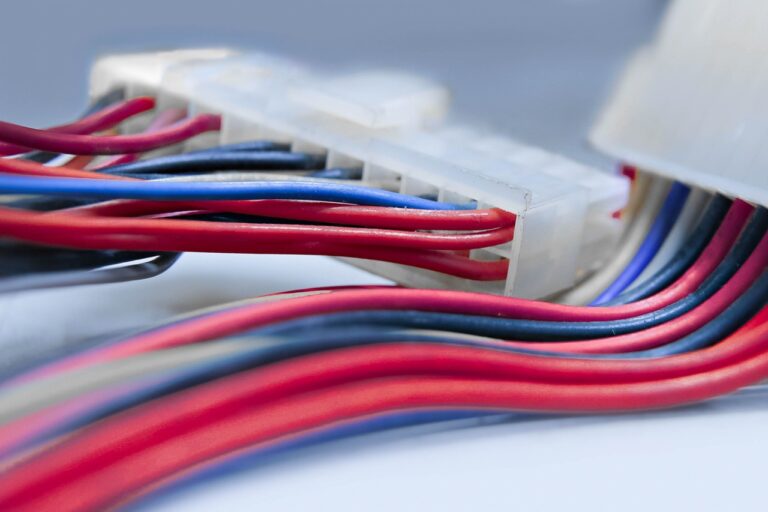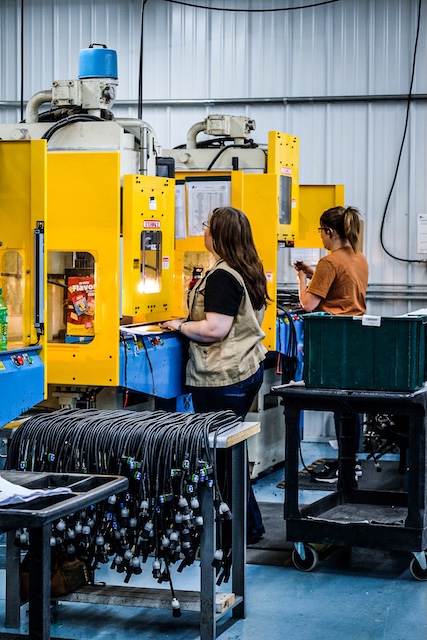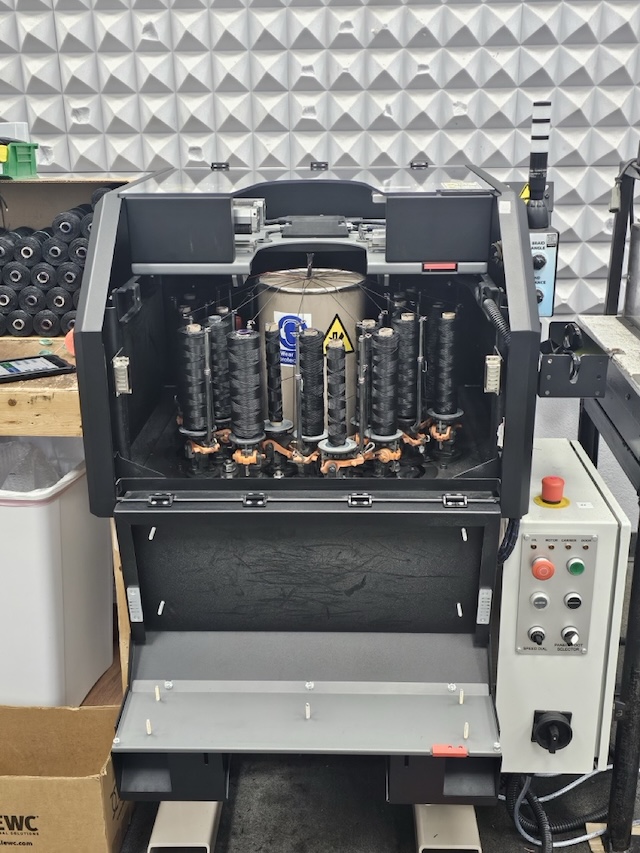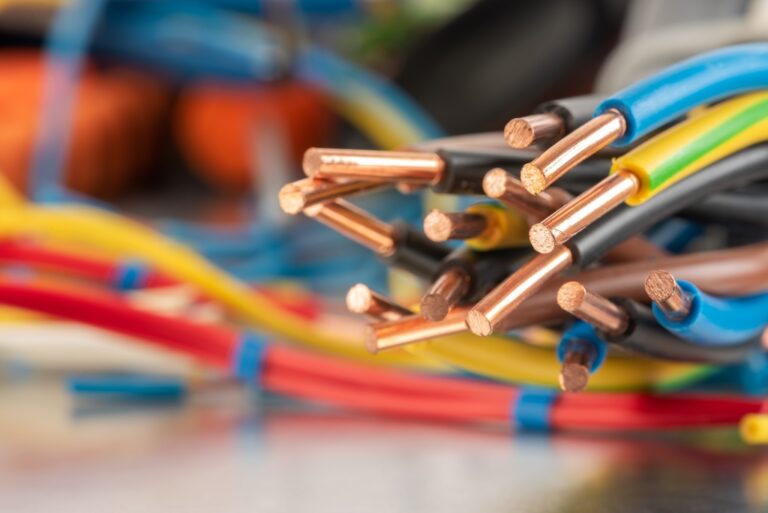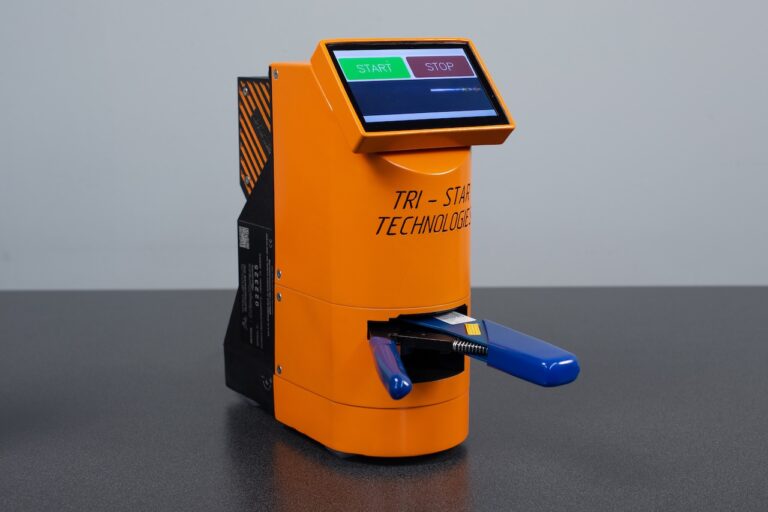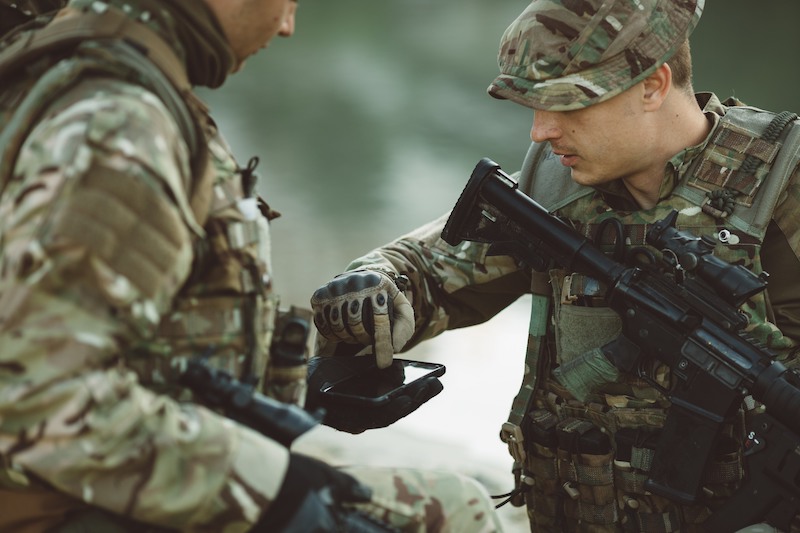The concept of the “future soldier” has evolved from the realm of science fiction to tangible reality. As we move further into the 21st century, the demands placed on military personnel have never been higher, necessitating the development of advanced technologies that enhance a soldier’s operational capabilities. At the forefront of this evolution is the integration of sophisticated gear, including helmets, vision glasses, vests, and body armor, all interconnected by high-performance connectors. Here, Ryan Humphreys, Sr. Associate Product Manager at connector specialist PEI-Genesis, discusses the role of connectors in the components of the future soldier’s gear.
The Role of Advanced Connectors in Modern Soldier Gear
In today’s combat environments, the effectiveness of a soldier is not only determined by their training and weaponry but also by the technology they carry. Modern soldier systems are designed to be modular and interoperable, enabling a seamless integration of various components such as communication devices, sensors, power systems, and protective gear. The key to this integration lies in advanced connectors, which ensure reliable, high-speed data transmission, power distribution, and durability under the harshest conditions.
These connectors are the unsung heroes that bind the complex web of modern soldier gear together. They must meet stringent requirements, including being lightweight, rugged, resistant to environmental factors like dust, moisture, and extreme temperatures, and capable of withstanding the mechanical stress of combat. Moreover, the growing use of digital systems in military operations demands connectors that support high-speed data transfer and low latency, enabling soldiers to maintain real-time communication and situational awareness.
Enhancing Helmets
One of the most critical components of a soldier’s gear is the helmet, which has evolved from merely offering ballistic protection to becoming a hub for integrated technologies. Modern helmets often feature built-in communication systems, night vision devices, and augmented reality displays that provide soldiers with vital battlefield information.
To support these capabilities, connectors like Amphenol’s 2M series are indispensable. The 2M series is renowned for its high-density, miniature connectors that offer robust performance while minimizing size and weight – a crucial factor for helmet-mounted systems. These connectors are designed to provide reliable data and power connections, ensuring that communication systems remain operational even in the most challenging environments.
Similarly, ITT Cannon’s MKJ series connectors are widely used in helmet systems due to their compact size, high reliability, and durability. These connectors are designed to withstand shock and vibration, making them ideal for head-mounted displays and other helmet-integrated technologies. The MKJ series also supports high-speed data transfer, which is essential for real-time video feeds and augmented reality applications that are becoming increasingly common in modern helmets.
Vision Glasses: Precision and Clarity
Vision enhancement tools, such as night vision goggles and augmented reality glasses, are another critical component of the future soldier’s gear. These devices provide soldiers with enhanced situational awareness, allowing them to operate effectively in low-light conditions or navigate complex environments using augmented information overlays.
The Stingray 7 series of connectors by Amphenol is specifically designed for applications that require high precision and reliability, making them an ideal choice for vision enhancement tools. These connectors are compact and lightweight, reducing the burden on the soldier while ensuring that the connection remains stable and secure even during rapid movements.
Stingray 7 connectors are also known for their ease of use, featuring a quick disconnect mechanism that allows soldiers to quickly attach or detach their vision glasses as needed. This flexibility is crucial in combat scenarios where time is of the essence. Additionally, these connectors are sealed to protect against environmental contaminants, ensuring that the vision systems remain functional in dust, rain, or extreme temperatures.
Vests and Body Armor: Powering Protection
Vests and body armor are fundamental to a soldier’s protection, but they have evolved far beyond mere ballistic protection. Modern body armor systems often include integrated electronics for monitoring vital signs, power distribution for other gear, and communication systems. This transformation necessitates the use of reliable, low-profile connectors that do not compromise the protective capabilities of the vest.
Amphenol’s Terrapin series connectors are particularly well-suited for these applications. The Terrapin connectors are ultra-rugged and designed to withstand extreme conditions, including exposure to chemicals, abrasion, and high impacts. Their low-profile design ensures that they do not add unnecessary bulk to the vest, maintaining the soldier’s mobility and comfort. Furthermore, Terrapin connectors are equipped with a push-pull locking mechanism that allows for quick and secure connections, which is vital in high-pressure situations.
Similarly, ITT Cannon’s MKJ series is also utilized in modern vests and body armor. These connectors provide reliable power and data connections to the various electronic systems integrated into the vest. The MKJ series is particularly noted for its durability and ability to function in harsh conditions, ensuring that the electronics within the vest remain operational even in the most demanding environments.
The Future of Soldier Gear: Integration and Innovation
The evolution of soldier gear is driven by the need for greater integration, where every component works in harmony to enhance the soldier’s capabilities. Advanced connectors like Amphenol’s 2M, Stingray 7, and Terrapin series, along with ITT Cannon’s MKJ series, are at the heart of this integration. They provide the critical links that enable the seamless operation of the various systems that soldiers rely on, from communication and vision enhancement to protection and power management.
As we look to the future, the importance of these connectors will only grow. The next generation of soldier gear will likely incorporate even more advanced technologies, such as artificial intelligence, wearable sensors, and more sophisticated communication systems. These advancements will require connectors that are not only durable and reliable but also capable of handling the increased data and power demands of these systems.
In conclusion, the future soldier will be a highly connected, technologically enhanced warrior, and the connectors that link their gear together will play a pivotal role in their effectiveness on the battlefield. By investing in and developing these advanced connectors, connector manufacturers like Amphenol and ITT Cannon are ensuring that soldiers are equipped with the tools they need to succeed in the complex and demanding environments of modern warfare.
To find out more about PEI-Genesis’ ranges of military-grade connectors visit www.pei-genesis.com.

























